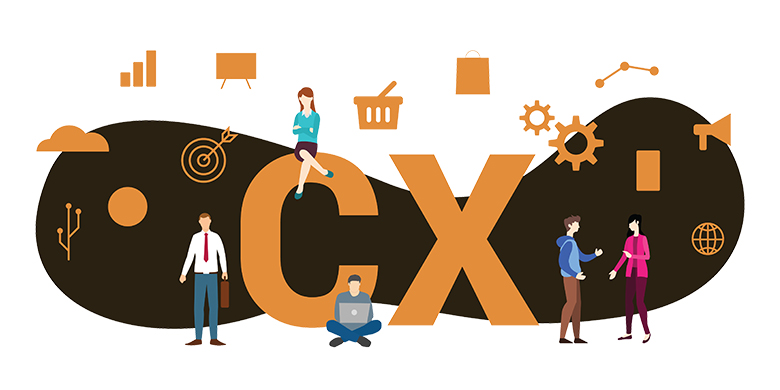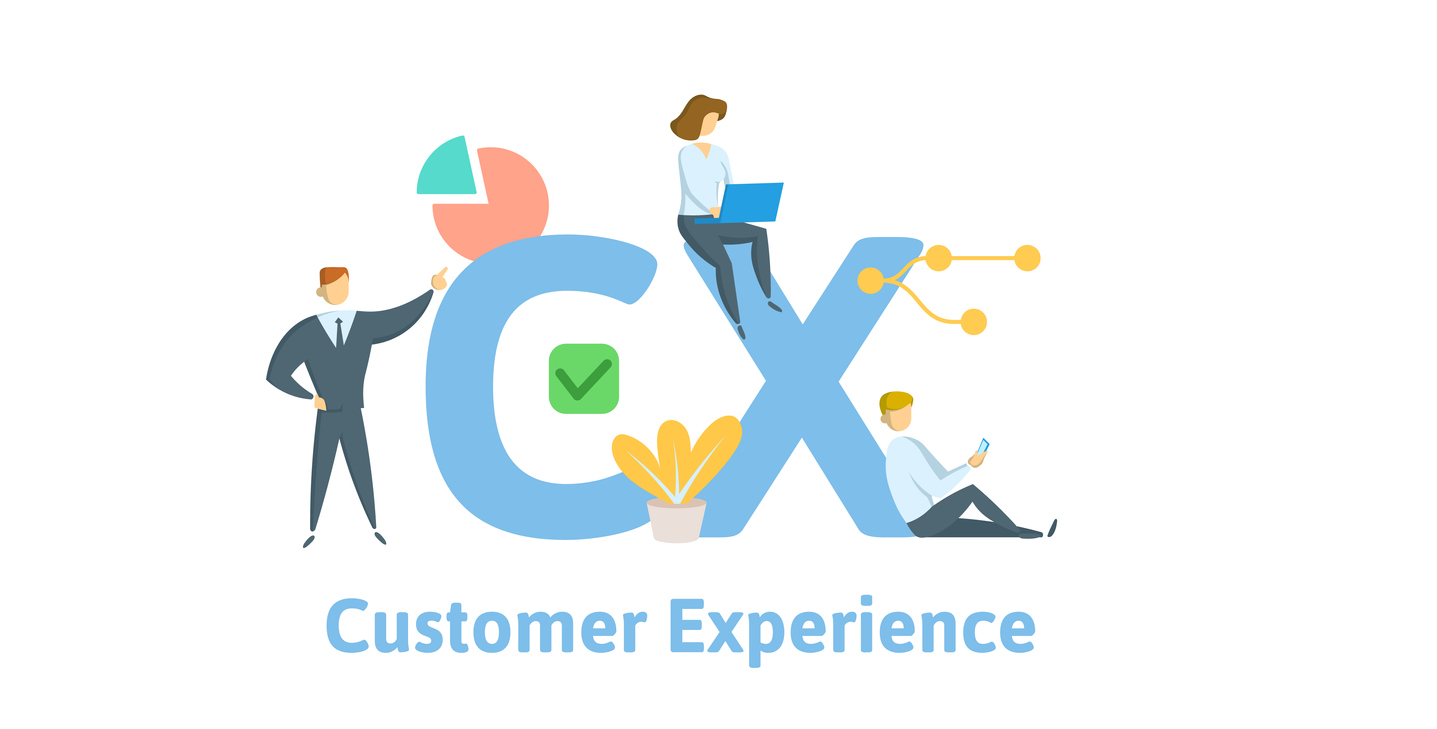In today’s competitive landscape, businesses are increasingly focusing on enhancing CX (Customer Experience) as a key differentiator. CX encompasses every interaction a customer has with a company, from browsing a website to engaging with customer service representatives. In this article, we delve into the significance of CX, its essential elements, strategies for improvement, measurement techniques, industry implementations, challenges, and future trends.
Importance of CX Customer Experience in Business Success

CX plays a pivotal role in shaping customer perceptions, loyalty, and overall business success. A positive experience fosters customer satisfaction, encourages repeat purchases, and generates positive word-of-mouth referrals. Conversely, poor CX can lead to customer churn, negative reviews, and damage to brand reputation. In today’s digitally driven world, where consumers have numerous options at their fingertips, providing exceptional CX is no longer a luxury but a necessity for sustainable growth.
Understanding the Elements of CX Customer Experience
- User Interface (UI) Design: An intuitive and visually appealing UI enhances usability, simplifies navigation, and improves overall satisfaction.
- Customer Service: Responsive, knowledgeable, and empathetic customer support creates memorable experiences and fosters trust and loyalty.
- Product Quality: Consistently delivering high-quality products that meet or exceed customer expectations is fundamental to building brand credibility and customer satisfaction.
- Brand Reputation: Also, building a positive brand image through transparent communication, ethical practices. and community engagement enhances customer trust and loyalty.
Strategies for Improving CX
- Personalization: Leveraging data analytics to tailor products, services, and communications to individual preferences and behaviors enhances relevance and customer engagement.
- Omnichannel Approach: Seamless integration across multiple touchpoints, including physical stores, websites, mobile apps, and social media platforms. ensures consistent and cohesive experiences.
- Feedback Mechanisms: Actively soliciting and acting upon customer feedback through surveys, reviews. and social media channels demonstrate a commitment to continuous improvement and customer-centricity.
Measuring CX Customer Experience Success
- Net Promoter Score (NPS): Measures customer loyalty and likelihood to recommend the brand to others.
- Customer Satisfaction (CSAT): Gauges overall satisfaction with specific products or services.
- Customer Effort Score (CES): Assesses the ease of conducting transactions and resolving issues.
Implementing CX Across Industries
- Retail: Personalized recommendations, hassle-free returns, and in-store experiences contribute to enhanced CX.
- Hospitality: Seamless booking processes, attentive service, and personalized amenities elevate guest satisfaction.
- E-commerce: Intuitive website navigation, transparent pricing, and efficient checkout processes drive customer loyalty and repeat purchases.
Challenges
Despite its importance, implementing effective CX strategies can pose challenges for businesses. These may include resource constraints, siloed organizational structures, technological limitations, and evolving customer expectations.
Overcoming CX Challenges
To overcome these challenges, businesses must prioritize CX at the organizational level, invest in technology and training, foster cross-departmental collaboration, and adapt to changing customer preferences and industry trends.
Case Study: Transforming Customer Experience in a Leading Consumer Electronics Brand
In the competitive world of consumer electronics, a brand decided to work on improving its customer experience. Through analyzing the customers and their different behaviours, and providing the right experience for them through the rapid changes in the market and the customer’s interest. Adjusting the services to match their interest is critical. With a large number of competitors trying to enhance their customer experience, working on it is significant. Let’s know how the company focused on some key elements to enhance its customer experience.
-
The Shift Towards Customer-Centricity
The company realized the importance of the customer’s journey with the brand, not only the final product. It understood the customer’s awareness and high expectations of the brands. So they started with shifting the company culture to customer-centric approach. Ensure every department is thinking about the customers, starting from the product development, ending with customer service.
-
Redesigning the Digital Experience
The improvement in the digital platforms, specifically the website and the mobile app, was significant. The design was recreated to ensure the ease of navigation for the users and to provide a more personalized experience. The data were analyzed to provide more recommended products for the customers based on their purchases. This personalization not only improved the experience but also enhanced the customer experience.
-
Improved Customer Support
The company invested in customer service technology. To be able to provide faster and easier support through the customer support team. They depended on an advanced tool to track the customer’s interactions with the brand, to ensure that there are no difficulties they are not facing. Also, the company empowered multiple support channels, including live chat, social media, and video calls, to ensure customers could reach customer support through any channel.
-
Creating a Seamless Omnichannel Experience
The company doubted an omnichannel approach to connect all the customer’s touchpoints with the company seamlessly. No matter whether the customers are doing online shopping, using the mobile app, or in the physical store. They were able to experience the same high-quality services across all the channels. In-store associates were equipped with mobile devices that allowed them to know the customers’ purchasing history. To be able to provide customized services and recommend the right products.
-
Utilizing Feedback for Continuous Improvement
To understand the customers more deeply, the company applied a feedback mechanism. By providing different feedback collection methods, such as post-purchasing feedback or in-app reviews. This helped the company to collect information about the products’ development and the customer experiences. It also enables the customers to have ongoing dialogue, to ensure their feedback is collected.
-
Measuring CX Success
The company doubted many customer experience measurements, including the net promoter score, customer satisfaction, and customer effort score. To be able to track the customer sentiment deeper. This helped the company to measure the success of the approaches and how they affected customer satisfaction. To be able to make better decisions based on real-time data.
Conclusion
In an increasingly competitive marketplace, businesses that prioritize CX Customer Experience and continuously strive to exceed customer expectations will emerge as industry leaders. By embracing innovation, harnessing data-driven insights, and fostering customer-centric cultures, organizations can cultivate lasting relationships, drive loyalty, and achieve sustainable growth in the digital age.
To experience firsthand how AIM Technologies can revolutionize your approach to customer experience management, request a demo today!
FAQs
What role does technology play in enhancing CX?
- Technology enables businesses to personalize experiences, streamline processes, gather insights, and engage with customers across multiple channels, thereby enhancing overall CX.
How can small businesses improve CX on a limited budget?
- Small businesses can focus on personalized interactions leveraging social media for customer engagement. and implementing simple feedback mechanisms to gather insights and drive improvements.
Why is CX measurement important?
- CX measurement allows businesses to assess performance. Identify areas for improvement, track customer sentiment, and make data-driven decisions to enhance overall satisfaction and loyalty.
What are some common mistakes businesses make in CX implementation?
- Common mistakes include a lack of consistency across channels, ignoring customer feedback, and failing to train frontline staff adequately. And overlooking the importance of empathy and emotional connection in customer interactions.
How can businesses stay ahead of evolving CX trends?
- Businesses can stay ahead by staying informed about industry trends, listening to customer feedback, embracing emerging technologies, fostering a culture of innovation, and continuously adapting to meet evolving customer needs.




